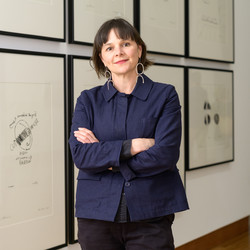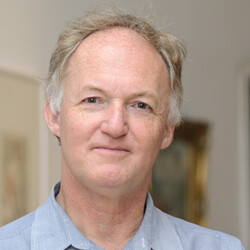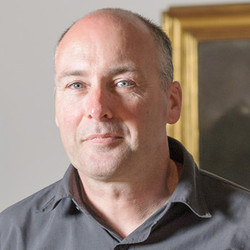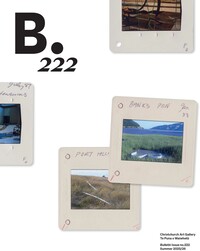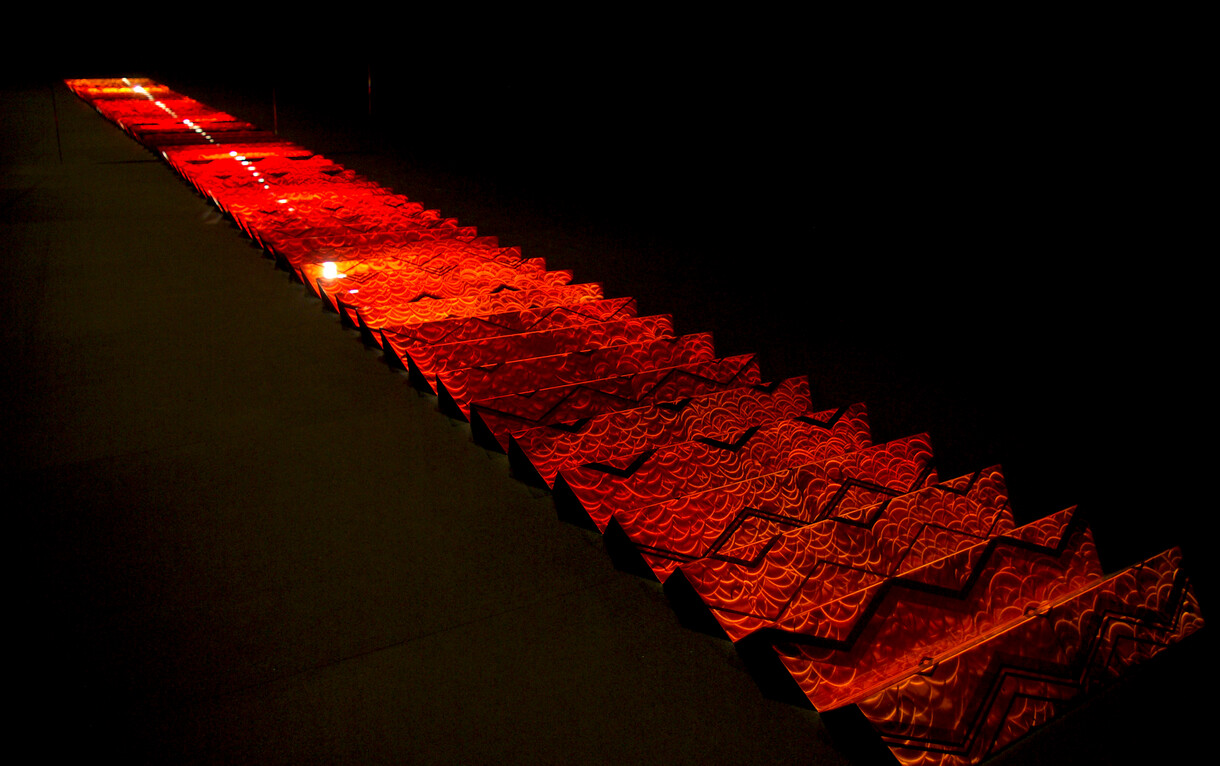What Taniwha Might Be Telling Us
A Conversation with Garrick Cooper and Carl Mika
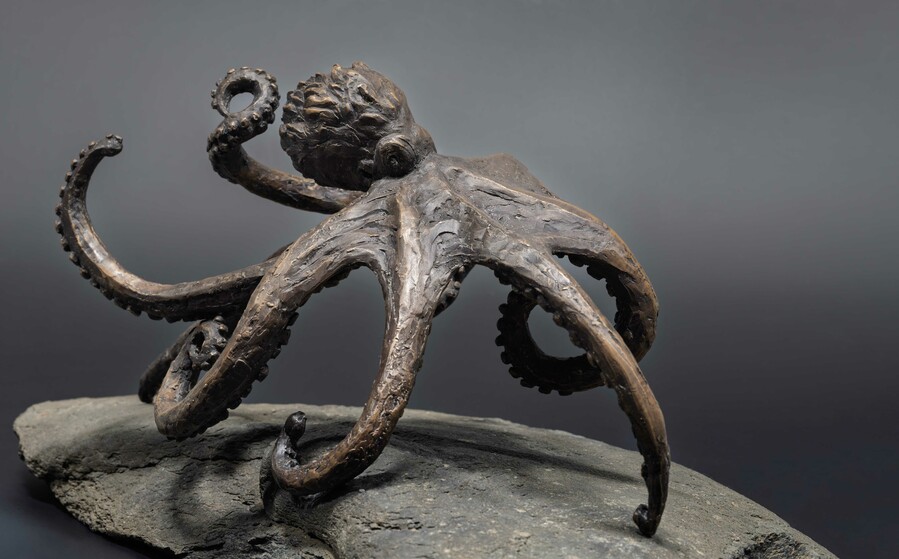
Piri Cowie Te Wheke – Aro Hā Series 2024. Bronze on karā (basalt). Courtesy of the artist
Carl Mika (Tuhourangi, Ngāti Whanaunga) is a professor and head of school at Aotahi: Māori and Indigenous Studies, Te Whare Wānanga o Waitaha University of Canterbury. His colleague Garrick Cooper (Ngāti Whanaunga, Ngāti Ranginui) is an associate professor at Aotahi.
What follows is Kirsty Dunn’s attempt to kōrero with her esteemed colleagues about references to taniwha in their mahi. This is a truncated version of an hour-long conversation in which they delve into Te Pō and talk about (or perhaps around?) taniwha a while…
“Taniwha are signalling a set of forces at play; the taniwha is telling you something about something else – there’s always something behind.”
KIRSTY DUNN: Carl, you were asked to respond to some recent writing that sought to help Pākehā come to terms with the idea of taniwha or to “take taniwha seriously”. I’m interested in how you moved the focus of that kōrero from a discussion about whether or not taniwha are real, to one that asks what the implications are of dismissing the realm of mystery, of the unknown.
CARL MIKA: For me, that particular discussion exemplified the way that some are trying so hard to come to terms with a method, as well as an outcome, to agree with the fact that taniwha might exist in some form, even if as a metaphor. My response was to not speak to that because it’s not important for us to discuss whether they exist or not. Instead, I would ask: taking as a given that taniwha exist, what is the nature of the interconnection between that thing and everything else? In what ways does it inter- connect and in what ways does it hide itself? What is the importance of its hiddenness? What is the importance of it revealing itself? Those are some of the things that occur to me now that might be more important to us as Māori, not whether the taniwha exists or not. Or if anything exists for that matter.
DUNN: We enter dangerous or unhelpful territory if we go down that road, don’t we?
MIKA: I think so. In deciding that it’s an important thing to discuss we become complicit in an ontological discussion that is not of our making. So I do think it’s dangerous.
GARRICK COOPER: Because even in attempts to recognise their existence, there’s always a reconciliation required and it’s back into the existing logic, right? Unless others can see its material effects in the world, then they can’t reconcile it. So it always has to come back to the material, the substance. By reconfiguring it to fit their worldview they actually hollow it right out… Carl, I remember you writing recently about the fear of an academic around the divine or the supernatural and how that’s one thing many would run a hundred miles from, which in itself suggests that there is something there, right?
MIKA: Yeah, well, that’s an interesting one, isn’t it? So the taniwha has a substance, even the imagination of the coloniser does. And that’s fascinating because for us, that is substance. That is materiality.
COOPER: Well, if you base your actions on responding to something – which you may or may not be able to see as material – it is material because you’re responding to it. It has a material effect.
MIKA: So it exists.
COOPER: And this maps on to a bundle of different things, including the fetishisation of the visible and the denial of the hidden. There’s this drive to make everything visible and a real difficulty with the existence of the hidden. Whereas I think we have the capacity and inclination to leave the hidden hidden or acknowledge its existence even in its hiddenness.
DUNN: I wanted to ask you, Garrick about references to taniwha in your writing. In one piece about intellectual freedom you opened your kōrero with a line from a lament for Te Haupa by Puakitawhiti: “Unuhia noatia te taniwha i te rua”. Here, you referred to this idea of the taniwha emerging or revealing itself as a response to something, a challenge perhaps, and I was thinking about how this contrasted with the ways in which taniwha are sometimes referred to as though they are the challenge, rather than the ones responding to it.
COOPER: So often that line, which appears a lot in waiata, is translated as “the taniwha left the den”, but I think a more accurate translation is “the taniwha has been drawn from the den”. This automatically signals a relationship with a particular phenomenon – it’s attracted to something, as opposed to being the something. So really, taniwha are signalling a set of forces at play; the taniwha is telling you something about something else – there’s always something behind. The collapsing of the messenger with the message is a particularly non-Māori way of reading that. This maps on to Carl’s idea of the visible versus the invisible or the hidden. For us, there’s always something behind the physical and the physical is not necessarily the most important thing. That reading of taniwha opens up a whole new conversation around metaphysics and how the old people understood their world.
For us, arguably, the metaphysical is a form of substance. That’s the way in which I would understand our world, things like mana, tapu, mauri. These are all deemed to be supernatural beliefs and immaterial, but for us they’re completely material and have affect in the world. They have an impact and influence and we’re always constantly aware of that.
It’s helpful I think to read people as representing a force or a message, as opposed to them being the message. Then we can start to get past “I don’t like that person”, “I despise them” or even “I like that person” because actually in many ways it’s irrelevant. It’s the interaction itself and what we are able to discern from that that is more fruitful. How are they speaking to us without speaking to us? I think we have the same relationship with taniwha.
MIKA: Do you think in some ways though the message could be inseparable? Through our own notion of materiality, do you think that there is no difference between whatever thing we’re talking about in the message but they form one materiality? If we referred back to traditional metaphysics, is it possible that we would have said there’s absolutely no difference between those things?
COOPER: Yeah, I wouldn’t disagree with that. I think there’s a different sense of engagement. So we understand that we might see things, but that same thing may also need to be heard or sensed or felt. And so whenever the seen thing doesn’t reveal the wholeness of that thing, there’s other aspects to it which can’t be engaged or identified through sight or through light. So it’s not that they’re not separate things. They’re all part of the same thing but have to be engaged differently.
MIKA: Do you think we have to recalibrate ourselves in order to engage with it?
COOPER: Yeah. Again, that’s the fetishisation of the tangible, the physical, the visible in the world and we’re complicit in that project. Interesting that a pīwakawaka has just popped in to visit us…
DUNN: Oh kia ora.
MIKA: Well, this is a part of this school of thought. [To our visitor] You’re welcome to participate in the interview…
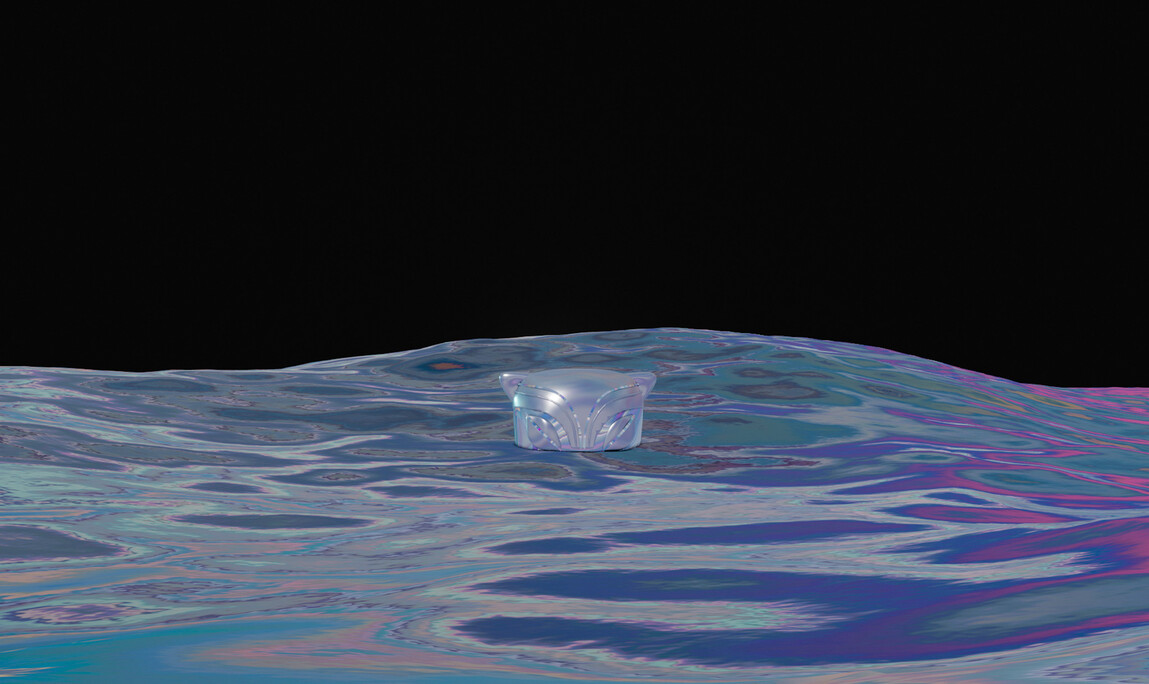
Kahurangiariki Smith Ride or Die (still) 2024. Digital animation. Courtesy of the artist
At this point the taniwha invites us along a different ara. We discuss tohu and Te Pō and once more revisit both the difficulties with, and potentiality of, language. I ask if we can discuss the all-at-onceness-and-oneness of things and where taniwha fit within this?
DUNN: It’s really hard to articulate a lot of this thinking because language is a trap, and because of the ways that taniwha defy or trouble some of these claims and categories. Do you think that they help us to think through the oneness of things because of their unknowability, their slipperiness…
MIKA: Yeah. So what we end up doing then is hopefully, as Garrick says, leaving some gap between what we imagine it to be and what it actually is.
COOPER: I like the way you described the defiance of the taniwha, the way they refuse to be locked into any particular logic or set of descriptions.
DUNN: For me, that’s the heart of this kaupapa; I understand that I may make mistakes in my attempt to get to that by showing that there are so many ways of relating to and thinking about taniwha. If you can’t be defined or categorised or fully known, how can anyone have power over you? I am drawn to that mystery, not because I have any desire to find the answer, but because of the potential that lives in there. There is so much in the kōrero that surround taniwha. But by talking about them, asking questions, am I undoing that? I’m not trying to mess with what’s hidden. Or do any kind of illuminating, ew. [Laughter.] I’m trying to celebrate it. It’s hard and scary this thing but I guess I still want to try.
MIKA: You won’t be able to avoid that, I don’t think. [Laughter.]
DUNN: I’m not trying to provide any definitive answers. There’s no conclusion. No one truth. Not one story. It’s everything at once. Does that make sense?
MIKA: Yeah, it does.
COOPER: So just slightly antithetical to the academic project, right. [Laughter.]
MIKA: Yeah, you’re operating in two worlds. There’s no doubt about it. To go back to what I was saying initially, we need to determine what the features are of our worldview that enable us to decide generally what isn’t appropriate to talk about and we have to do that quite consciously and systematically now. I don’t know whether that’s something along the lines of some guidelines like “Does our discussion about the thing encourage a connection between the self and the thing being talked about and is that demonstrable through the way it’s discussed?” And so when we write or talk about, say, the taniwha, I think it’s probably important to do it in ways other than academic language. And there might be another one which is more negative – does it make the thing too visible when we’re discussing it?”
DUNN: This is what I’m concerned about.
MIKA: What is that ontological pillar? How is that being adhered to; that we make things hidden as well when we discuss them. That’s a collective project because it has pro- found implications for how we talk about anything. We’re talking about replacing one deeply embedded set of logics for another. That’s more fundamental than any discussion about science or anything like that. So for example, I think if we had come together and decided that we needed to think about things differently, we might not be answering questions in the same way that we are now. Without this idea of correctness when we respond to each other our answers would be more like “What you say reminds me of this…” And that would be quite deliberate. We would refer back consciously to the logic that had developed in order to undo that need for correspondence and correctness that we’ve bought into or become used to. You know what I’m saying?
DUNN: Yes. But also no.
MIKA: And that’s very much an old people thing. You know what I mean by that? Garrick and I have talked about this often, but the old people would often not respond directly to your questions.
DUNN: It’s like what you were doing in the writing in the piece I asked you about at the start isn’t it. That’s the same kind of thing that you’re doing because you’re not responding directly to that?
MIKA: Yeah.
DUNN: If you come with a question, the response is “Your question should have been this…”
MIKA: Yeah, that can happen as well because that is important. That is important for our worldview, that question. That one over there is not.
COOPER: Get your questions right. [No pressure for a newbie researcher]
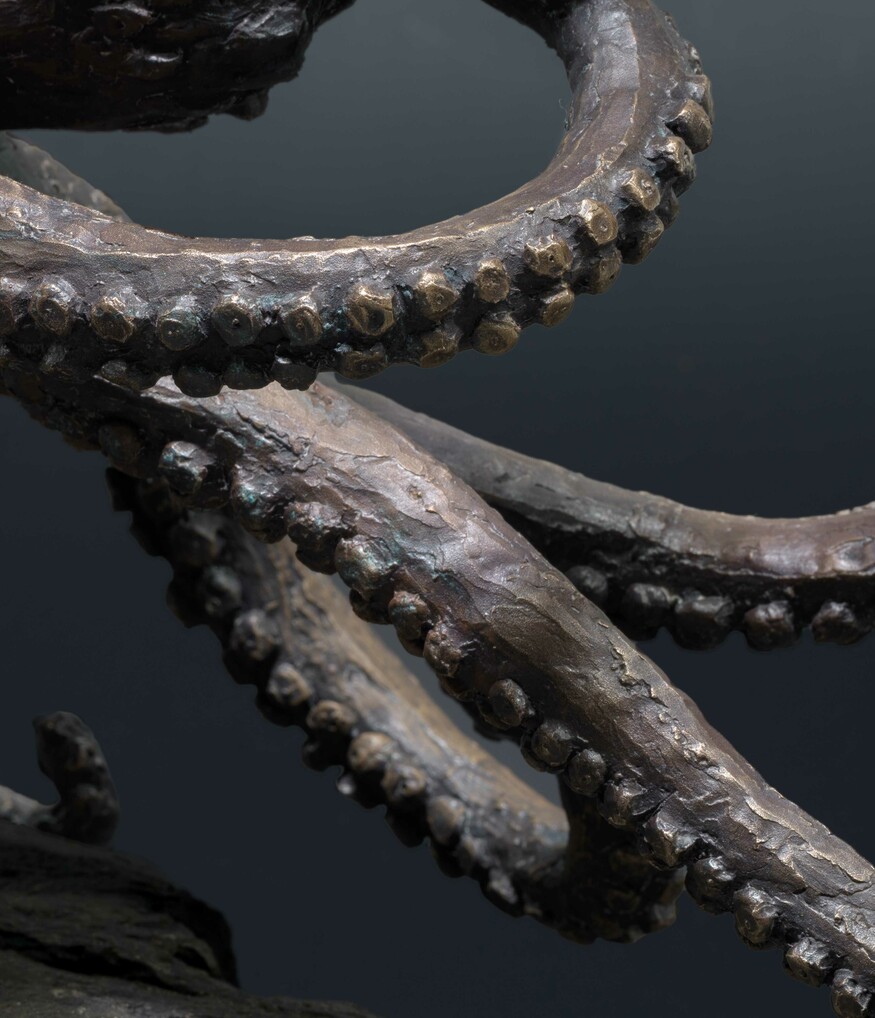
Piri Cowie Te Wheke – Aro Hā Series (detail) 2024. Bronze on karā (basalt). Courtesy of the artist
We follow another ara here: we discuss Te Pō and paradox and power amongst other things. Which somehow leads us here:
DUNN: It’s been interesting to hear people using this word ‘taniwha’ to describe things like climate change and COVID. Of the coalition government as a “three-headed taniwha”. Artificial intelligence has been referred to as a taniwha too. I wondered what you both think about this kupu being applied in these ways.
MIKA: Well, I’d say you have to be careful when you do it because you don’t want to give just anyone the mana of taniwha do you.
COOPER: I do think there is a fear component to it. It’s about how you conceive of fear and the value you ascribe to it, to dread. I know what you mean about the mana of the taniwha because these are iconic in our thought traditions. One different example that I think is completely appropriate was the discussion of Apirana Ngata in that way.
DUNN: You talked about Ranginui Walker, too. And I have heard Whina Cooper described in this way. Some people have said that “he taniwha hiku roa” refers to a leader, the tail as being many followers, but also that as the taniwha moves it changes the landscape; this idea that you’ve left something, a legacy.
COOPER: If we’re following along the same line and thinking around what a taniwha is, there’s a sort of physical manifestation of it, but then there’s something else, the sets of forces that it signals. For the three-headed taniwha, is it the endurance of these conservative forces? Influences from overseas? That’s what that idea of the taniwha conveys, there’s something else beyond.
MIKA: There are three-headed monsters in the West and they might be a more appropriate way of describing it.
DUNN: Do you think the word has been used for ‘monster’ or ‘dragon’ as is sometimes the case in certain translations?
MIKA: So make it explicit, that pathway?
COOPER: That’s the whakapapa of that use of taniwha.
MIKA: Yes; that makes it clear that it’s coined for that reason, but it isn’t necessarily that thing. That’s just how we’re choosing to describe it at that point.
COOPER: So we don’t imbue it with a particular mana.
MIKA: Yes.
COOPER: But even mana itself is – there’s a healthy respect for forces in Māori thought and how those forces might manifest. So whilst there might not be the same genealogy with those conservative, political, radical, right-wing forces, we certainly respect its power.
MIKA: It forms a sort of mystery for us, doesn’t it?
COOPER: Yeah. It’s not about whether you like or dislike that. It’s a respect for its power.
MIKA: It’s like, if you retained science as another fundamental appearance of a metaphysics, which is vastly different from our own, then you would be in awe of it. That’s as far as you can collaborate with it – you can be in awe of it. And in a similar way, I guess, to what you were saying, Garrick, it does have a certain mana because of that awe you feel. That doesn’t mean you agree with it.
COOPER: I was reading your last couple of questions about mātauranga Māori and both of our healthy dose of scepticism towards it. Matau conveys a sense of locking things in place, a development of an expertise that again shuts down possibilities. That is to say, there is nothing more to be known.
MIKA: Or you’ve developed the foundations and you don’t need to revisit anything.
COOPER: It’s no different. It’s no different from knowledge. It’s simply a translation of knowledge.
DUNN: So am I right in understanding that part of the critique is that, if you don’t have mystery and spaces for the not knowing within this realm…
MIKA: Yes, that’s my view, as inconvenient as it is. If you’re going to cite te ao Māori as a basis for mātauranga Māori, bring that in.
COOPER: Complexities, unanswered questions, unanswerable questions.
DUNN: The ability to hold two things that seem in direct opposition together at the same time?
MIKA: That kind of paradox, yeah.
DUNN: That’s something that I think about probably on a daily basis since I first heard you say it, Garrick. I find that’s really generative for me, that paradox. It can be messy and a bit chaotic, but also inspiring. Productive...


